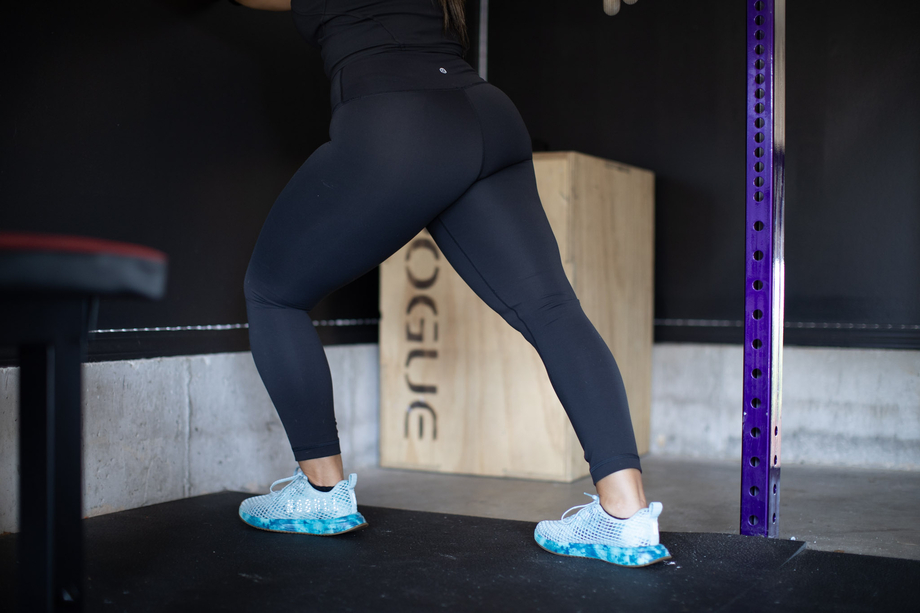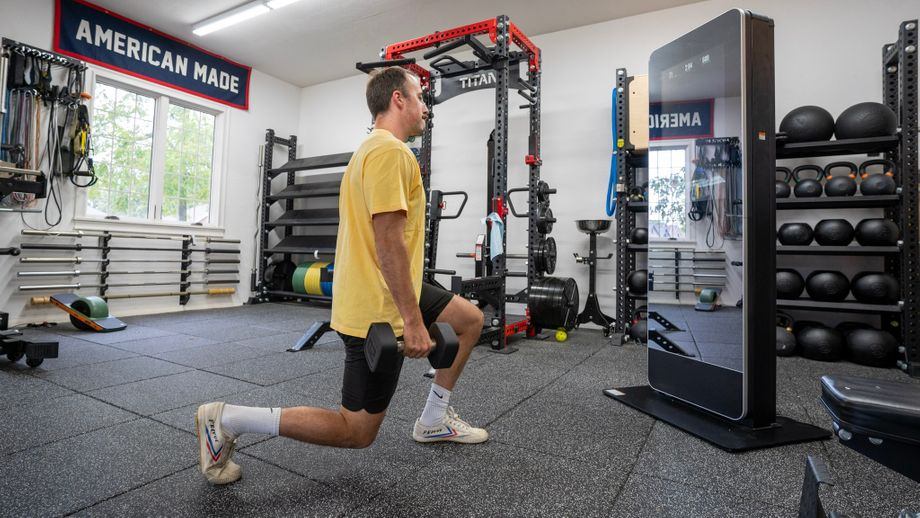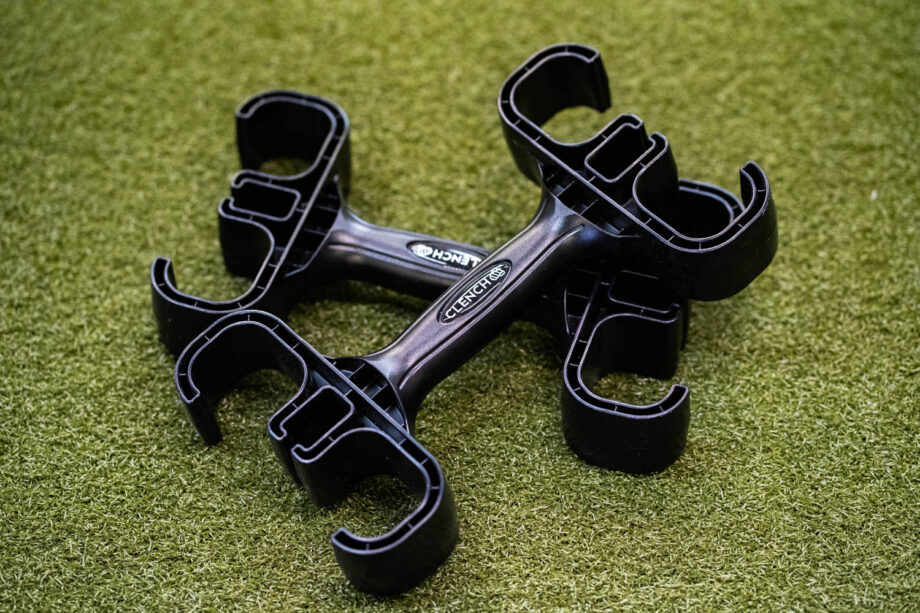Plantar fasciitis, that aching, stabbing pain often felt in the heel and arch of your foot, affects nearly 10% of the U.S. population1. It’s irritating, to say the least, and once someone develops this condition, it can take months to go away, even with proper treatment.
This article will explain everything you need to know about chronic plantar fasciitis, including the symptoms, causes, treatment options, and more. We’ll also look at various risk factors and things you can do to reduce your risk and ease symptoms if you’re currently suffering.
Medical disclaimer: This article is intended for educational and informational purposes only. It is not intended as a substitute for medical advice. For health advice, contact a licensed healthcare provider.
Fast Facts About Plantar Fasciitis
Before we examine the current state of plantar fasciitis in detail, here are a few quick facts about this painful condition.
- 10% of the U.S. population1, which is roughly 2 million people, suffer from plantar fasciitis.
- Plantar fasciitis is most common in people ages 40-602, particularly affecting women1.
- It’s most common in runners and older people, but factors like weight and gender can have an impact on your risk.
- If left untreated, you’re more prone to developing chronic heel pain2, making it difficult to do everyday activities, including proper walking.
- 80% of people with plantar fasciitis improve within 12 months3 of treatment.
A Closer Look At Plantar Fasciitis
If you’ve ever suffered from foot pain, you may have heard of plantar fasciitis and wondered whether this is the root of your problems or if something else is the culprit. After all, foot pain can have all kinds of causes, like muscle strains, bruises, or even improper footwear.
Plantar fasciitis refers to a chronic inflammation of the soft tissue around your heel and bottom of the foot, and those who suffer from it tend to experience sharp pain that’s often worse when you first get out of bed or when you’ve been sitting for a while.

If you’ve had pain in your foot that goes away on its own, it’s probably not plantar fasciitis. But if it lingers for weeks or months and seems to worsen over time, you may be experiencing this condition. Let’s take a closer look.
Facts About Plantar Fasciitis
Now that we’ve briefly discussed plantar fasciitis, we can examine the details and statistics and explain everything you need to know.
What is Plantar Fasciitis?
Plantar fasciitis, the most common cause of heel pain, refers to inflammation of the plantar fascia4, a thick band of tissue that runs from your heel to your toes. Fascia is a thin layer of connective tissue that wraps around your body’s muscles, tendons, ligaments, and joints, helping support and strengthen the soft tissue.
Healthy fascia is flexible and pliable but can become stiff and painful when irritated, leading to tissue degeneration. Plantar fasciitis typically feels like a stabbing pain in the bottom of your heel that may come and go throughout the day or feel worse at certain times.
Pain in the back of your heel, higher up your ankle, may be an issue with the Achilles tendon, as plantar fasciitis tends to affect the bottom of the heel and foot.
With proper care and treatment, you can usually resolve plantar fasciitis within a year, but left untreated, it often gets worse.
Causes of Plantar Fasciitis
There are many things that can trigger the onset of plantar fasciitis, rather than a single culprit to blame.
According to the Cleveland Clinic5, here are a few of the most common reasons people develop lingering heel pain.
- Being on your feet all day: Standing for long periods of time can cause overuse strain that irritates the fascia, especially if you’re standing on a hard surface with bare feet or socks.
- Exercising: While exercise is beneficial for our health, neglecting your safety can cause plantar fasciitis to set in, particularly when working out on hard surfaces in bare feet, neglecting a proper warm-up, or repetitive impact from running or other weight-bearing activities.
- Improper Footwear: If you’re wearing shoes that don’t provide proper support, like flip-flops or flat shoes without inserts, you’re more likely to develop plantar fasciitis, especially if you’re on your feet for long periods.
RELATED: How to Choose Running Shoes
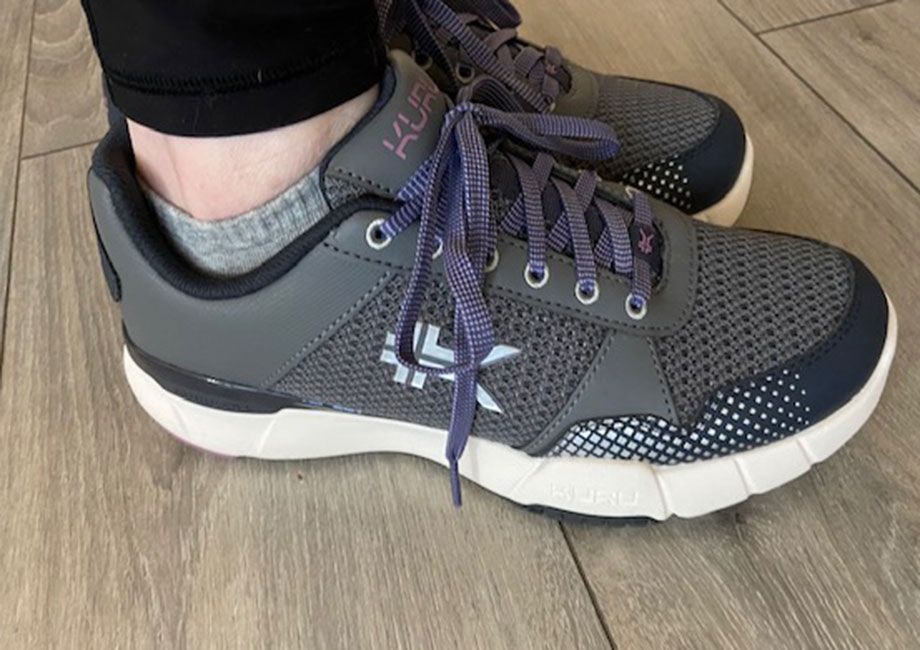
Certain people are genetically predisposed to plantar fasciitis, particularly those with very high foot arches, which can place additional strain on the plantar fascia without proper supportive footwear.
Symptoms and Diagnosis
Heel pain can have many causes, such as bone spurs, Achilles tendonitis, stress fractures, and more, so to help you figure out what’s going on, let’s look at the common symptoms of plantar fasciitis.
The most common symptom of plantar fasciitis is a stabbing pain in the heel bone or bottom of the foot, particularly when first waking up6 or after extended periods of sitting. If your pain goes away after you’ve been moving around and have some blood flowing through your foot, that’s a good sign that you’re probably suffering from this condition.
To diagnose plantar fasciitis, a medical professional like a sports medicine doctor, physical therapist, or orthopedic surgeon will typically take a history of your symptoms and conduct a physical exam to determine where the pain is coming from, looking for pain in the bottom of your foot. Depending on the severity, an x-ray or other imaging tests may be required to rule out other problems.
Treatment of Plantar Fasciitis
Thankfully, those suffering from plantar fasciitis are usually able to find relief with proper treatment and care. Complete relief can take up to a year, and about 5% of cases result in surgery1.
Here are some popular treatment options.
- NSAIDs: Non-steroidal anti-inflammatory drugs, such as ibuprofen, naproxen, or aspirin can reduce pain and inflammation. Anti-inflammatory medication can provide mild pain relief within 20-30 minutes, but shouldn’t be taken for more than 10 consecutive days5 without consulting with a doctor.
- Ice: Ice can provide relief nearly immediately, as cold exposure creates a numbing and anti-inflammatory effect.
- Supportive shoes: One of the most important things you can do is wear supportive shoes to relieve plantar fasciitis pain, or have orthotics made to provide customized arch support.
- Massage: Massage can help loosen and relax soft tissue in the body, including the fascia in your feet. You can self-massage the bottom of your feet and heel using your hand, fingers, or a recovery tool like a massage gun or lacrosse ball.
- Night splints: Another popular option, night splints are designed to provide a gentle stretch through your foot and calf while you sleep, aiming to increase flexibility and relieve pain.
- Physical therapy: If you’re unsure of the proper self-massage techniques, a physical therapist may be able to provide in-person instruction for stretching exercises and massage you can do at home.
- Professional treatment: If these at-home treatments aren’t working, some doctors may utilize treatments such as platelet-rich plasma injections, corticosteroid injections, or even surgery to repair the damaged tissue.
How Common Is Plantar Fasciitis?
Unfortunately, plantar fasciitis is exceptionally common, affecting nearly 10% of the U.S. population1. Anyone can develop it, but it’s most common among people ages 40-60, those with a BMI over 27 kg/m2, people with flat or very high arches, and individuals with tight calf muscles.
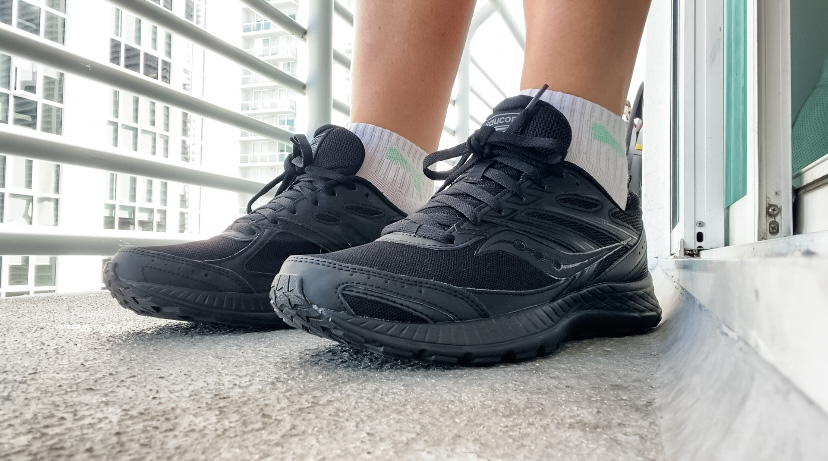
Individuals with jobs that keep them on their feet all day are also more likely to develop plantar fasciitis2.
RELATED: Best Walking Shoes for Flat Feet
Plantar Fasciitis and Gender
While all genders can develop plantar fasciitis, people assigned female at birth are two and a half times more likely to develop it7.
In particular, women between the ages of 45 and 64 seem to be the most likely to experience plantar fasciitis. This may be because they are likely to wear shoes with inadequate support or that contribute to tight calves, like high heels.
Weight also plays a role in plantar fasciitis, and pregnant people often find the excess weight can irritate their heels, though all genders are at a higher risk when carrying excess weight.
RELATED: Best Weight Loss Program for Women
Plantar Fasciitis and Weight
Another important risk factor for plantar fasciitis is carrying excess body weight, which can place more strain on the soft tissue in your legs, ankles, and feet, particularly the plantar fascia2.
If you have a body mass index (BMI) of 30 or higher, your risk of developing plantar fasciitis is almost six times greater8 than a person with a BMI categorized as “normal weight.”
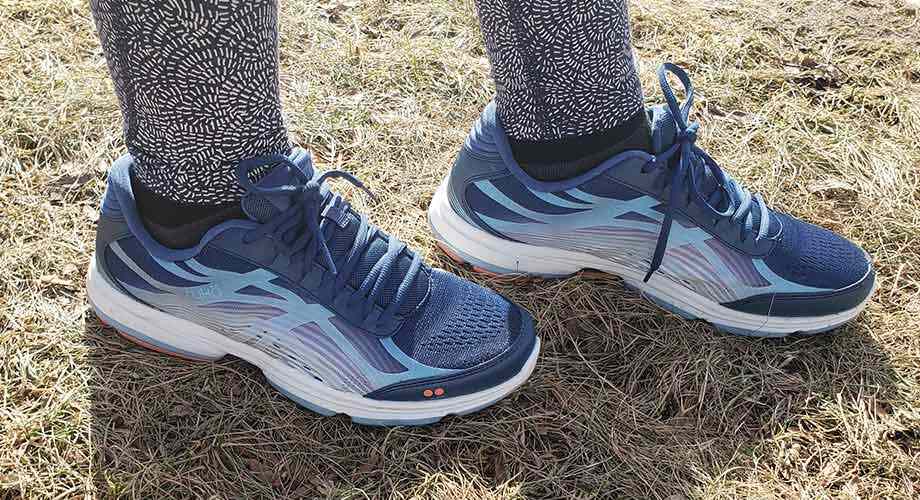
This doesn’t necessarily mean obesity or individuals with excess body fat, as people with large amounts of muscle mass can also have a high BMI that places extra strain on the fascia.
If you’re looking to reduce inflammation, following a well-rounded diet that includes foods high in protein, fruits, and vegetables and avoiding highly inflammatory food may help relieve chronic pain9.
Plantar Fasciitis and Runners
You’ll want to pay close attention to proper footwear, stretching, and ankle mobility, as chronic heel pain is one of the most common foot injuries in runners.
In fact, 42% of middle-distance runners and 25% of long-distance runners10 are estimated to have plantar fasciitis.
As mentioned earlier, many risk factors include flat feet or high arches, improper footwear that lacks cushioning, and tight musculature around the ankles. If you’re a runner, be sure you wear proper running shoes with plenty of support and take time to work on your ankle mobility.
RELATED: Best Running Shoes for High Arches
Other Risk Factors of Plantar Fasciitis
While gender, weight, and repetitive use, like running, are the biggest risk factors, there are a few more worth mentioning.
- Occupational risk: Individuals in occupations requiring long periods of standing, such as factory workers, nurses, or teachers, are at a higher risk2 and should be sure to wear proper footwear during the workday. They also may want to consider wearing recovery shoes after work.
- Foot anatomy: Individual foot anatomy can increase your risk of developing plantar fasciitis. In particular, those with high arches or flat feet tend to place more stress on the plantar fascia2, increasing the risk of irritating the tissue and developing chronic pain.
- Lack of mobility: The primary muscle in the calf, the gastrocnemius, is connected to the plantar fascia by the Achilles tendon. If the calf or tendon is tight, they’ll pull on the fascia in your foot, which may increase irritation and pain through the heel or arch of the foot.
Plantar Fasciitis: Final Thoughts
If you’ve experienced the symptoms of plantar fasciitis, you’re not alone. This is a very common condition, and while it’s irritating, most cases can be resolved with proper treatment and care (though some cases may require surgery).
Managing the risk factors you can control and wearing proper footwear will go a long way toward minimizing your risk. If you start noticing symptoms, seeking professional care as soon as possible may help prevent things from worsening.
- Plantar fasciitis affects roughly 10% of the U.S. population
- Risk factors include gender, carrying excess body weight, standing for long periods of time, or having high arches or flat feet.
- At-home treatment options include ice, aspirin, stretching, massage, and custom shoe inserts when needed. In severe cases, other medical treatments such as steroid injections or surgery may be required.
- Wearing supportive shoes and avoiding long periods of standing on your bare feet may help reduce the risk of developing plantar fasciitis.
Plantar Fasciitis: FAQs
How can I fix my plantar fasciitis?
Plantar fasciitis has several treatment options, including icing the area, massage, over-the-counter medications, and professional treatment in cases that aren’t improving.
Does plantar fasciitis ever go away?
Yes, plantar fasciitis can go away with proper care and rest, but depending on the severity, it may take up to a year.
Is walking good for plantar fasciitis?
While plantar fasciitis tends to fade after you’re up and moving around, too much walking can make things worse, especially if you’re wearing improper footwear that doesn’t provide adequate protection and support.
What happens if you leave plantar fasciitis untreated?
Left untreated, plantar fasciitis can continue to worsen over time, and proper treatment can become more difficult the longer you wait.
References
- Buchanan, B. K., Sina, R. E., & Kushner, D. (2024, January 7). Plantar fasciitis. StatPearls – NCBI Bookshelf. https://www.ncbi.nlm.nih.gov/books/NBK431073/
- Plantar fasciitis – Symptoms and causes – Mayo Clinic. (2023, September 7). Mayo Clinic. https://www.mayoclinic.org/diseases-conditions/plantar-fasciitis/symptoms-causes/syc-20354846
- Trojian, T., & Tucker, A. K. (2019, June 15). Plantar fasciitis. AAFP. https://www.aafp.org/pubs/afp/issues/2019/0615/p744.html
- Plantar fasciitis. (2022, October 28). Yale Medicine. https://www.yalemedicine.org/conditions/plantar-fasciitis
- Professional, C. C. M. (n.d.). Plantar fasciitis. Cleveland Clinic. https://my.clevelandclinic.org/health/diseases/14709-plantar-fasciitis
- What is plantar fasciitis? (2023, September 13). WebMD. https://www.webmd.com/fitness-exercise/understanding-plantar-fasciitis-basics
- Analysis of data on the prevalence and pharmacologic treatment of plantar fasciitis pain. (n.d.). NCCIH. https://www.nccih.nih.gov/research/research-results/analysis-of-data-on-the-prevalence-and-pharmacologic-treatment-of-plantar-fasciitis-pain
- 3 of the Most Common Risk Factors of Plantar Fasciitis: South Sound Foot & Ankle: Podiatric Medicine and Surgery. (n.d.). https://www.ssfoot.com/blog/3-of-the-most-common-risk-factors-of-plantar-fasciitis
- Sala-Climent, M., López de Coca, T., Guerrero, M. D., Muñoz, F. J., López-Ruíz, M. A., Moreno, L., Alacreu, M., & Dea-Ayuela, M. A. (2023). The effect of an anti-inflammatory diet on chronic pain: a pilot study. Frontiers in nutrition, 10, 1205526. https://doi.org/10.3389/fnut.2023.1205526
- Vasiliadis, A. V., Kazas, C., Tsatlidou, M., Vazakidis, P., & Metaxiotis, D. (2021). Plantar Injuries in Runners: Is There an Association With Weekly Running Volume?. Cureus, 13(8), e17537. https://doi.org/10.7759/cureus.17537


